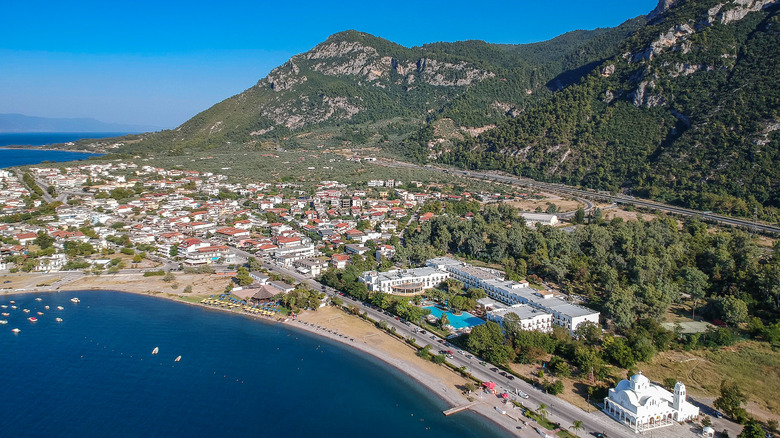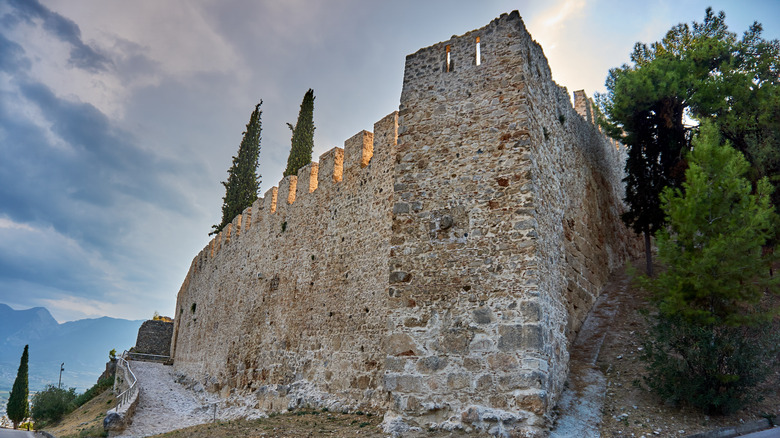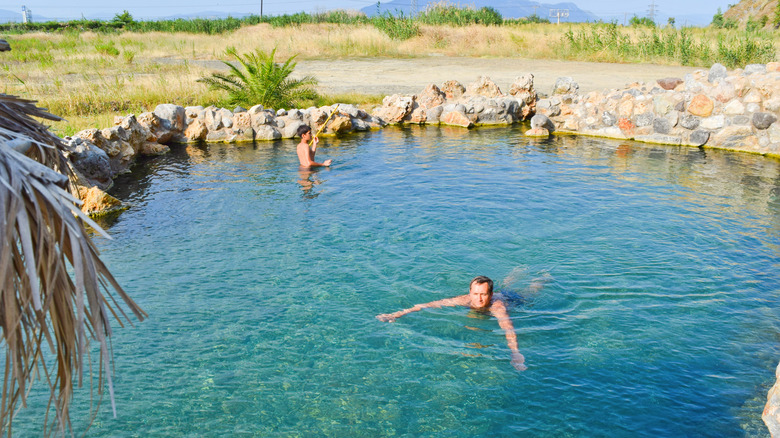This Hidden Gem Greek Destination Is An Idyllic Escape Perfect For Outdoor Adventures
When you tell someone you're going to visit Greece, they probably imagine the Acropolis in Athens right away or the beaches of Mykonos. However, Greece is a fascinating country with plenty of islands and inland cities. With the amount of history in this part of Europe, the warm weather, and cultural differences between each of what were once many city-states, every town has something new and different to offer. One region that you might not plan a visit to right away but is definitely worth your time is Phthiotis, also spelled Fthiotida (Φθιώτιδα in Greek). We'll be using Phthiotis to avoid confusion. This region is rather large, but there are some wonderful hikes, historic sites (including one you may know from a comic book and a movie), and so much more.
You can visit medieval churches, castles, monasteries, and monuments to past battles, soak in hot springs of several different varieties, and hike through a national park to waterfalls in Phthiotis, which is roughly a two- or three-hour drive from Athens. You can even trek your way past a temple that is said to be where a Greek mythological hero was burned on a funeral pyre. Let's look at what to do in the incredible region of Phthiotis and what you need to know.
Lamia and Thermopylae
The main city in Phthiotis is Lamia. Make sure to visit the Lamia Castle, which has parts that date back to the 5th century BCE and medieval fortifications around it. This castle has an extra treat inside in the form of the Lamia Archaeological Museum, which will show you artifacts that have been discovered over the years. It also sits at the highest point in the city, so there are some astonishing views to be had. You can also visit the Agathon Monastery from between the 14th and 15th centuries. Some of it burned during the Greek War of Independence, though some relics and other items survived and are on display.
A short distance (around 17 miles) away is Thermopylae, which you may know from the comic book and movie "300." There, you'll find the spot where Spartan King Leonidas and his troop of 300 fighters held the Hot Gates from the Persian King Xerxes in 480 BCE. The water was much closer to the site in antiquity, so it doesn't look exactly as you may think. However, there is a wonderful memorial with a bronze statue of Leonidas. If you're coming from Athens, there is a tour that will take you there and nearby Delphi to see the ruins of Apollo's temple at Delphi, a place one of the first travel writers in history recommended. There is also a thermal spa right here called Loutra Thermopilon. However, there is another spot in Phthiotis that has several more.
Kamena Vourla and more
These hot springs are in Kamena Vourla, very close to Thermopylae, so you can do it in a day. There are four different kinds of springs here, which include a radioactive spring (with radon), hydrogen sulfide-chloride, ferruginous, and the cosmetic spring of Aphrodite (the Greek goddess of love and beauty), which features sulfur. The springs are usually in the area of 95-100 degrees Fahrenheit and are free to use. Something to note is that you must wear a bathing suit.
Another outdoor adventure you can do in Phthiotis is to visit Mount Oeta National Park. Oeta, one of a number of mountains in the park, is sometimes referred to as the "mountain of flowers." Some of the ones that bloom there include orchids, lilies, daffodils, and crocus. It's also a great place to spot wildlife like roe deer, Balkan chamois, golden eagles, wild boar, brown bears, martens, short-toed snake eagles, and Syrian woodpeckers.
There are plenty of hiking trails in the park, but if you take the Pavlini-Katavothra-Pavliani trail, aka the Hercules' Path trail, you'll see the ruins of a temple which is said to be where the mythological hero died on his funeral pyre. This hike starts in the village of Pavliani (about 23 miles from Thermopylae) and goes for 9.3 miles. While you pack for your trip, here's what to keep in mind for the hotspots of Greece.


